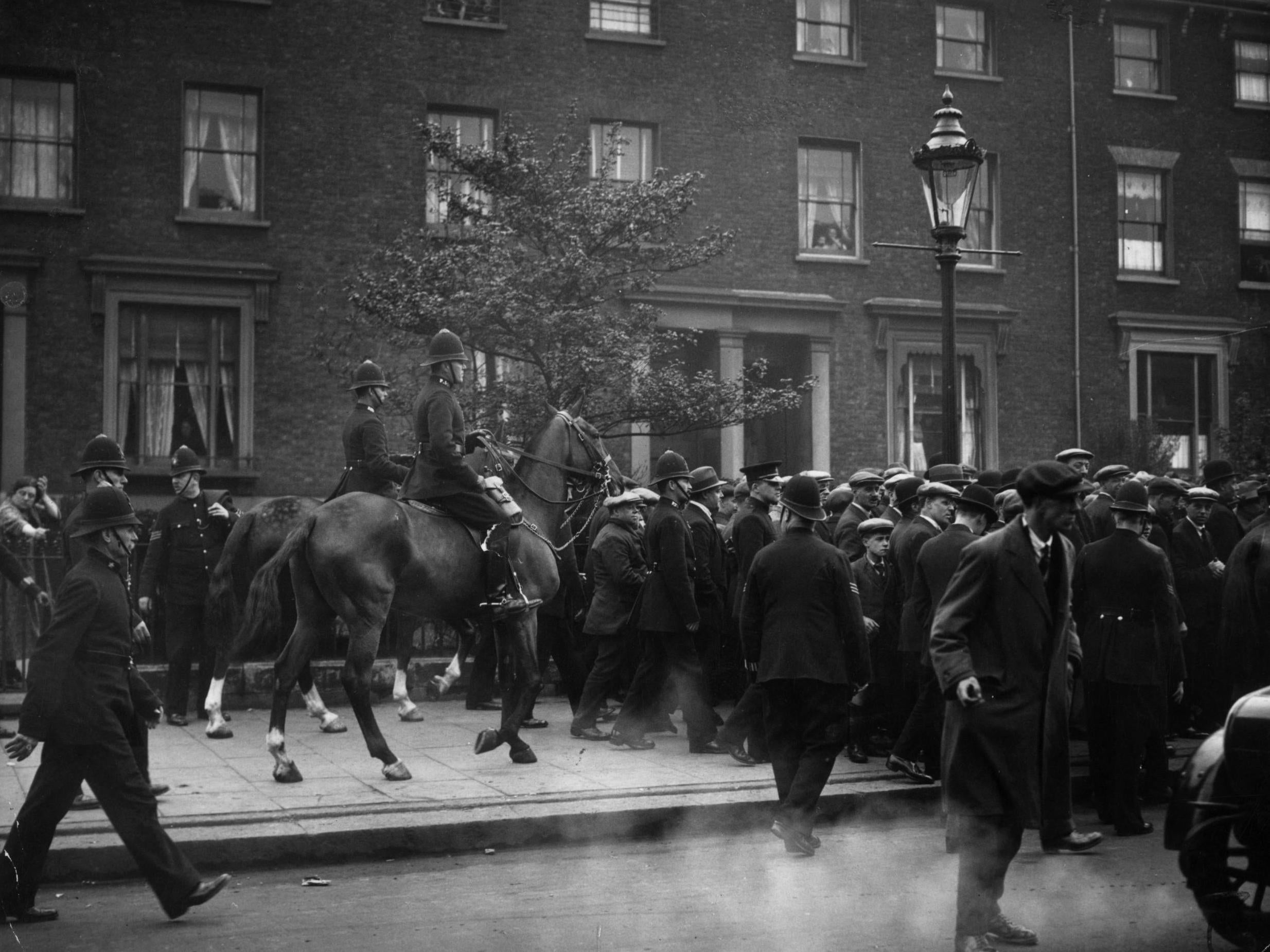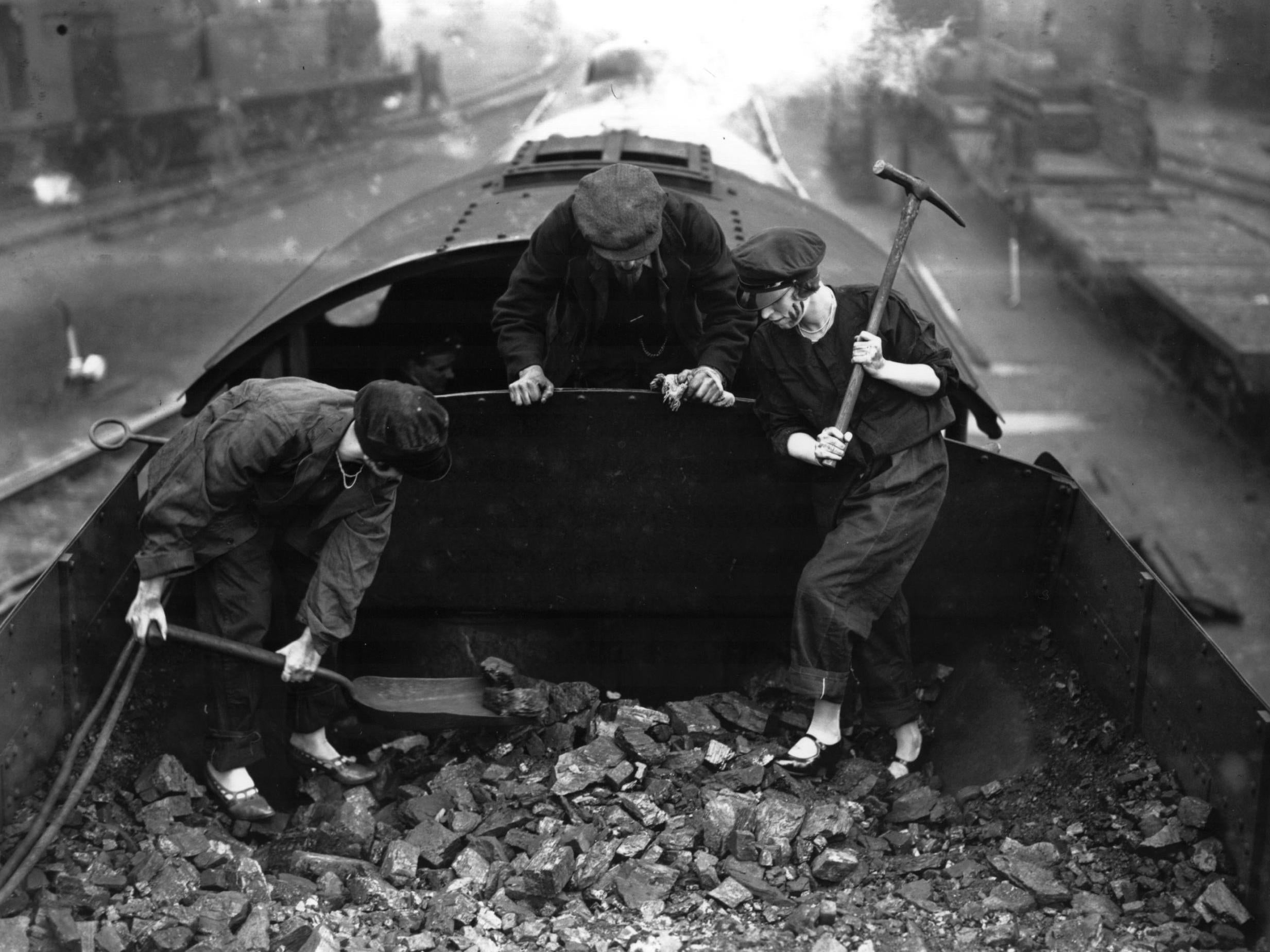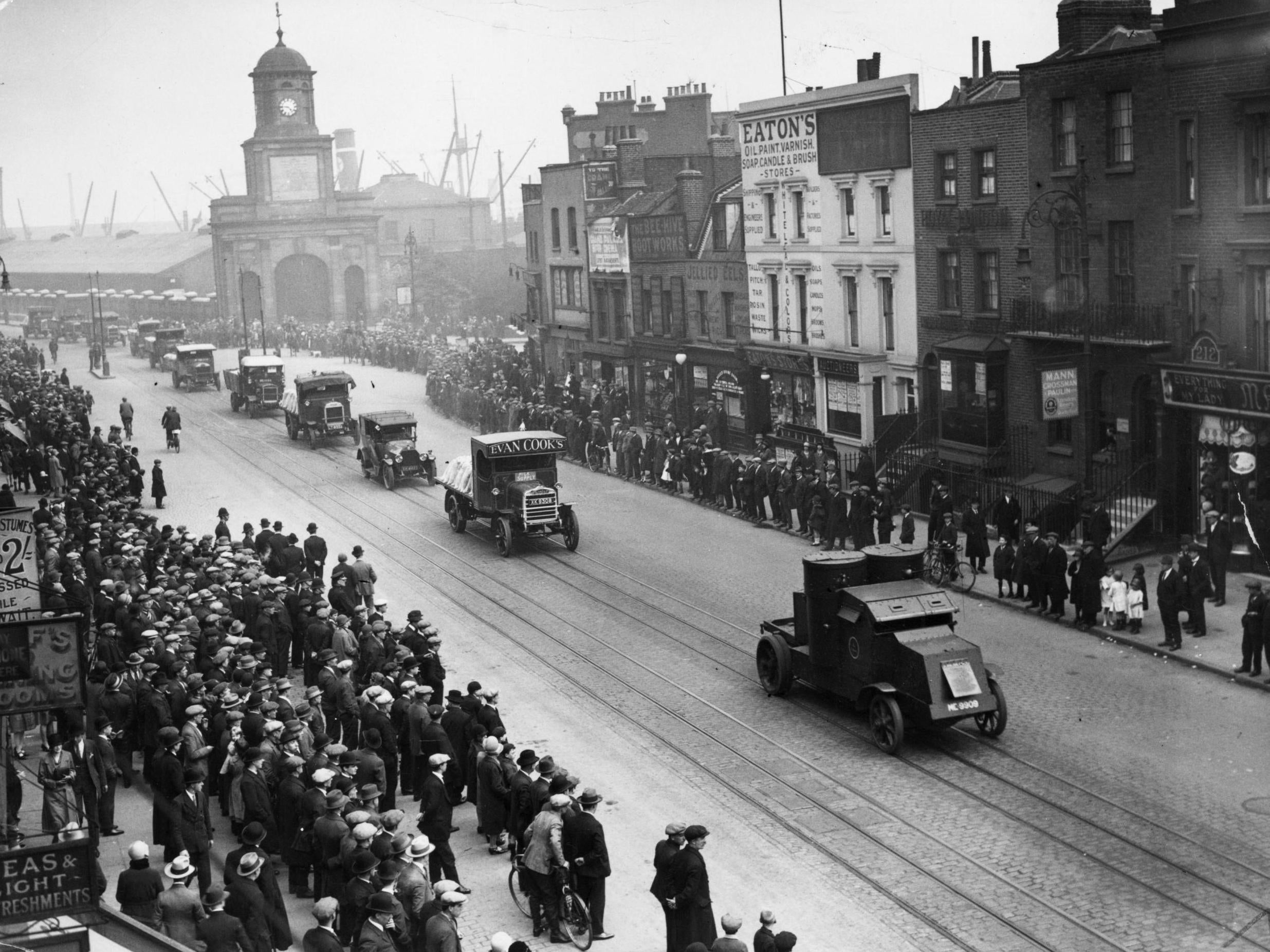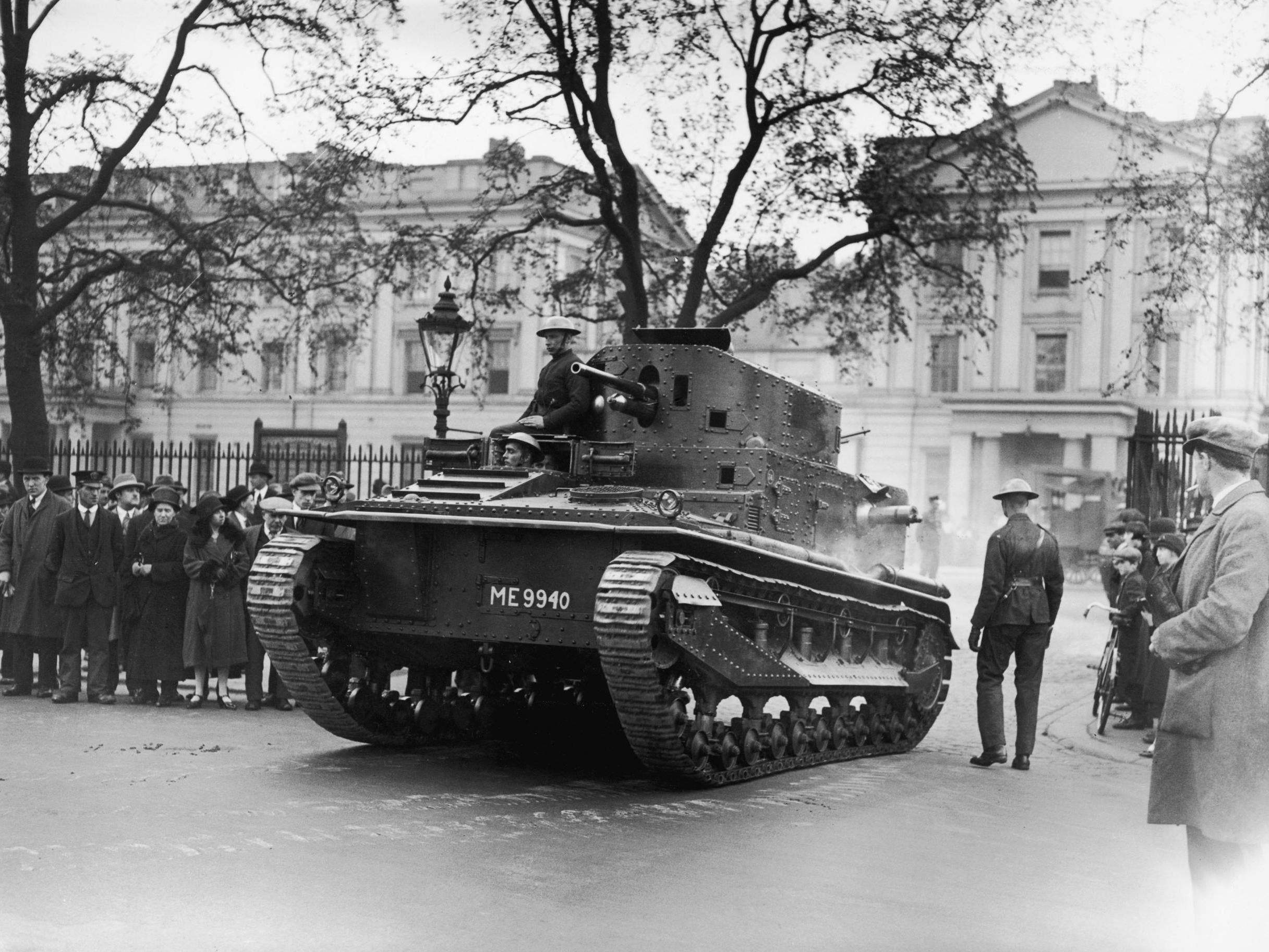General strike: What happened the last time Britain downed tools in 1926?
Transport chaos, volunteer engine drivers, special constables and tanks in the streets as nation ground to a halt in sympathy with beleaguered coal miners
Your support helps us to tell the story
From reproductive rights to climate change to Big Tech, The Independent is on the ground when the story is developing. Whether it's investigating the financials of Elon Musk's pro-Trump PAC or producing our latest documentary, 'The A Word', which shines a light on the American women fighting for reproductive rights, we know how important it is to parse out the facts from the messaging.
At such a critical moment in US history, we need reporters on the ground. Your donation allows us to keep sending journalists to speak to both sides of the story.
The Independent is trusted by Americans across the entire political spectrum. And unlike many other quality news outlets, we choose not to lock Americans out of our reporting and analysis with paywalls. We believe quality journalism should be available to everyone, paid for by those who can afford it.
Your support makes all the difference.Labour MP Laura Smith has called for a general strike to bring down Theresa May’s government if the prime minister refuses to call a general election.
Speaking at a Momentum fringe event at the Labour Party Conference in Liverpool, the member for Crewe and Nantwich made the call for nationwide industrial action in response to faltering Brexit talks with the European Union, bringing a standing ovation from her audience.
The last time the UK collectively downed tools was in 1926, an extraordinary episode in 20th century British history.
What led to the general strike?
The strike was called one minute before midnight on Monday 3 May 1926 by the General Council of the Trades Union Congress (TUC) in sympathy with the 1.2 million coal miners who had been locked out of the pits after a dispute with company bosses.
The British coal industry had been hard hit by the First World War. The country’s own use of the fossil fuel had been heavy during the conflict while exports to Europe had ceased, allowing competitors from the US, Poland and Germany to fill the shortfall.
Prices for the mineral had also fallen as a result of the Dawes Plan, which required Germany to provide France and Italy – two key markets – with free coal as part of its reparations. With mine bosses as profit-minded as ever, miners’ wages had slumped from £6 per day to £3.90 in the post-war era as production fell from 247 tonnes per man per year to 199.
With the country still mired in post-war economic depression, British miners were angered by management demands that they work an extra hour per day and accept a 13 per cent wage cut, a position legitimised by a royal commission report into the industry undertaken by Sir Herbert Samuel. “Not a penny off the pay, not a minute on the day” was the Miners Federation of Great Britain’s response.
When TUC negotiations – led by JH Thomas – proved fruitless, the shafts were shut down for two days and the men turned away at the gates, after which the national strike was called as a last resort.
Who joined the general strike?
Labourers from across British industry joined the TUC’s call to arms, men ceasing work at docks, building sites, factories, warehouses, depots, steel and iron mills, power stations, print works, gas works and chemical plants.
The Triple Alliance of mining, rail and transport unions had formed in 1913 after an earlier period of industrial unrest and vowed to support one another in the event of a strike, a pledge they were now duty bound to honour.

The Labour Party was opposed to the action on the grounds that association with the more revolutionary elements among the unions, many of whom had one eye on the Bolsheviks in Russia, might damage it at the polls. The Daily Mail in particular had done much to whip up hysterical anti-communist sentiment at the time.
What happened during the general strike?
On 4 May, more than 1.75 million people were out on strike, bringing the country’s transport network to its knees as cars flooded the roads to compensate for the lack of buses or trains operating. The strike would ultimately last for nine days and bring chaos to Britain.
Stanley Baldwin’s Conservative government had been preparing for such an eventuality for nine months, reacting aggressively and sending in teams of middle-class volunteers and strikebreakers, many of them well-to-do housewives, to keep essential services operational.
Seeking to control the narrative by reining in the BBC, the state used its newspaper British Gazette to insist there were still 200 buses on the street. There were actually 86 and several were set on fire by protesters.

Fights soon broke out between strikers and police in major cities, from London, Liverpool, Middlesbrough, Preston and Hull to Glasgow, prompting the government to recruit a militia of 226,000 special constables called the Organisation for the Maintenance of Supplies, an organisation at no little risk of being infiltrated by fascists.
Whitehall also dispatched a naval warship to Newcastle after protesters derailed the Flying Scotsman express train in Northumberland, leading to the arrest of 374 communists.
When grocery lorries were held up at the London Docks, the armed forces were sent in to escort them in convoy to Hyde Park, offering protection from potential looters. On arrival, aristocratic ladies served tea to members of the public arriving to pick up emergency supplies of milk and other domestic goods.

King George V attempted to soothe the situation with an expression of sympathy for the miners. “Try living on their wages before you judge them,” he said.
Winston Churchill, then chancellor of the exchequer, also made sure his voice was heard, using his editorial in the Gazette to attack the strikers: “It is a very much more difficult task to feed the nation than it is to wreck it.”
Commenting in the same periodical, Prime Minster Baldwin wrote: “The General Strike is a challenge to Parliament and is the road to anarchy and ruin.”

Even the Roman Catholic Church entered the fray (on the government’s side), branding participation in the mass action a sin on 9 May.
On 12 May, the TUC struck a deal with the mine owners and the strike was called off. The men were forced to go back to work, completing longer shifts at reduced pay after all.
What was the general strike’s legacy?
The British coal sector boomed as the nation returned to work, with productivity hitting 300 tonnes per man per annum by 1939 and the eve of the Second World War. But the cost was high: employment in the sector fell by a third.
Membership of the TUC also tumbled - over what some regarded as a betrayal - from 5.5 million in 1925 to 3.75 million in 1930.
To avoid a repeat of the chaos, Baldwin’s government passed the 1927 Trades Disputes Act, which banned sympathy strikes outright. The government’s strong-arm response to the situation was unpopular, however, and Labour stormed to victory in the 1929 general election.
Repealed in 1946 under Labour, Margaret Thatcher reintroduced the act in the 1980s and the ban is still in place to this day.
While the general strike of 1926 has often been regarded as a heroic failure, it is hard to disagree with the assessment of James Hilton’s beloved school teacher Mr Chipping in Goodbye, Mr Chips (1934), who hailed the action as a “a very fine advertisement” for Britain, the dispute carried out on a national scale with “not a life lost... and not a shot fired”.

Join our commenting forum
Join thought-provoking conversations, follow other Independent readers and see their replies
Comments